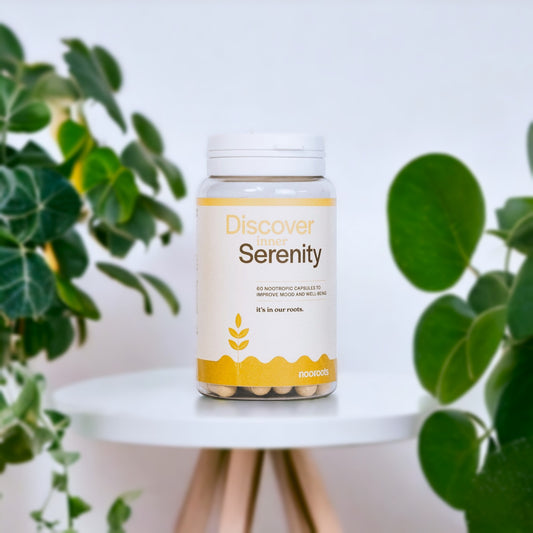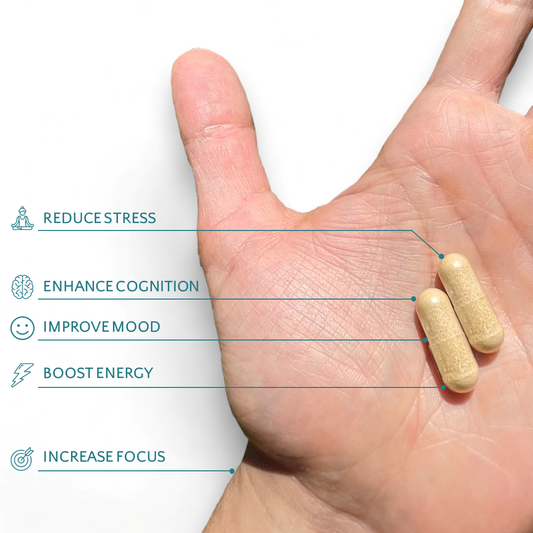Expert Writer and Contributor ✓
About the Author
Charlotte was awarded a Master of Science degree in chemistry from the University of Bristol. She is currently completing a PhD at the University of Leeds.
About the Contributor
Mus was awarded a Master of Science degree in Medical Biotechnology and Business Management from the University of Warwick.
Chocolate. What delicious thoughts come to mind when we hear that word. Whether you have it every day, every week or only on special occasions – it is undoubtedly one of life’s simple pleasures.
It would be easy to name our top 3 types of chocolates. But how many people know its history? The divine and fascinating origins of the Cacao plant. A plant that made a daring journey across the Atlantic Ocean, swept through medieval Europe and indulged the tastebuds of the lands inhabitants.
This bitter sweet history begins in a faraway place. Beneath the canopies of the Amazonian rainforests of Central and Upper America lived two ancients peoples. Their civilisations shrouded in mystery to this day. The Olmecs and the Mokaya. Sometime between 4,000 – 5,000 years ago, these peoples learnt to cultivate the Cacao tree that bore the prized Cacao beans.
This knowledge was passed on to future Mesoamerican cultures like the Mayans. Whom believed the plant had heavenly origins. The word “cacao” comes from the Mayan words “Ka'kau” meaning “heart blood,” and “Chokola'j” meaning “to drink together”.
It is said the Cacao plant grew using the blood of the Mayan gods. And it’s fruit was used to create humanity. The food of gods.
If you're looking to start taking Cacao as a supplement, you can learn more about our Mood & Wellbeing Nootropic Supplement at nooroots. If you have any questions after reading this post, you can either visit our support resources or simply contact us via our online form.
Contents
- What is Cacao ?
- Cacao Benefits
- Cacao Mechanism of Action
- Cacao Side Effects
- Recommended Dosages of Cacao
Cacao: A Health Guide to Safe and Effective Supplementation

What is Cacao?
Cacao beans, found in the large pods of the Theobroma cacao tree, are the essential ingredient in chocolate. Cacao was discovered over 5,000 years ago in South America. It was so highly prized by the Aztecs and Mayans for its edible and medicinal qualities, it was even used as currency1–3.
Cacao differs from cocoa in that cacao is the ‘raw’ product, whereas cocoa is the pressed powder at the end of the preparation process4. Cacao is rich in antioxidant and anti-inflammatory compounds, and has been shown to improve mental performance and mood2–6.
Cacao Benefits
We can all recall a time where we have felt better for having that square of chocolate, and you can rest assured that the science backs us up! Cacao is known to be:- Brain boosting: A double-blind, placebo-controlled trial showed that people given cacao had significantly improved cognitive performance6,7.
- Mood enhancing: Studies have found reduced depression and anxiety when cacao or cocoa-rich products are consumed6–9.
- Antioxidant: Compounds in cacao are powerful antioxidants, protecting cells from oxidative stress and DNA damage10.
Cacao Mechanism of Action
Cacao contains two main active phytochemicals (chemicals made by plants!): flavonols and methylxanthines3.
Flavonols
- Flavonols are powerful antioxidant and anti-inflammatory They lower the levels of harmful free radicals, protecting against cell stress and DNA damage. Flavonols may therefore reduce the risk of heart disease and stroke5,10–13.
- Flavonols accumulate in the brain in regions used for learning and memory. They also improve cerebral blood flow, making them excellent cognitive enhancers3,6,10,11.
- The primary methylxanthines in cacao are theobromine and caffeine. They promote incredible brain boosting effects, improving concentration, mood and mental performance.
- In addition, they protect neurons against degeneration associated with aging and cognitive decline3,6,7.
Cacao Side Effects
The consumption of cacao in moderate portions is very safe for humans. Due to its caffeine content, if consumed at excessive levels, it could cause the following side effects2:- Nervousness
- Increased urination
- Trouble sleeping
- Fast heartbeat
Recommended Dosages of Cacao
There is no set Nutrient Reference Value (NRV) or Safe Upper Limit (SUL) for Cacao. Unlike vitamin and minerals, Governments typically do not establish recommended daily guidelines for plant extracts.
However, the European Food Safety Authority (EFSA) has recommended that doses of Cocoa rich flavanols at 200mg/day can produce positive health benefits14.
A clinical study of 34 healthy adults found doses up to 2,000 mg (milligrams) a day were well tolerated and did not produce any negative side effects15.
Remember: if you are intaking a supplement in a product or in combination with other vitamins, minerals or plant extracts, then typically lower doses are sufficient to realize the desired benefits.
Learn More About NRV and SUL
The NRV and SUL are two values assigned to vitamins and minerals that are designed to provide guidance on how much of a specific nutrient can be consumed.
NRV can be defined as the amount of a specific nutrient needed to adequately meet known nutritional deficiencies. Whereas the SUL is the highest level of nutrient intake that is likely to pose no risk of bad health effects for almost all individuals in the general population.
It is very safe to consume levels of nutrients greater than the NRV as long as the intake is below the SUL.
At nooroots, we take both these values into consideration when performing research and product development. We work with our scientists and partners to select a nutrient level that is both safe and effective.
Conclusion
When we think of Ancient peoples its easy to assume they were not as intelligent as modern humans. Then again, it depends how you define intelligence. In our ‘civilized’ world we swapped rainforests for concrete jungles. Our appreciation of nature and spiritually is far inferior now than anytime in the past. Just turn on the news to see the warnings about climate change.
Yet, it is remarkable that with no technology, ancient peoples had impressive knowledge of the natural world. What plants to eat, which to avoid, which to grow.
Cacao was one to grow.
Today using modern scientific techniques we don’t just know that a plant is beneficial to health. We know how and why. The flavanols in Cacao have been shown to boost brain performance, enhance mood and act as a powerful antioxidant.
While no formal safe upper limits have been established, Cacao is very safe large doses up to 2,000mg per day. Although the EFSA found benefits can be felt from 200 mg.
If you're looking to start taking Cacao as a supplement, you can learn more about our Mood & Wellbeing Nootropic Supplement at nooroots.
Learn more about the other vitamins, minerals and plant extracts we use to give your brain a daily boost
Evidence
- History of Chocolate. History. https://www.history.com/topics/ancient-americas/history-of-chocolate (accessed 2022-05-27).
- COCOA: Overview, Uses, Side Effects, Precautions, Interactions, Dosing and Reviews. https://www.webmd.com/vitamins/ai/ingredientmono-812/cocoa (accessed 2022-05-30).
- Camandola, S.; Plick, N.; Mattson, M. P. Impact of Coffee and Cacao Purine Metabolites on Neuroplasticity and Neurodegenerative Disease. Neurochem Res 2019, 44 (1), 214–227. https://doi.org/10.1007/s11064-018-2492-0.
- Cacao vs Cocoa: What’s the Difference? Healthline. https://www.healthline.com/nutrition/cacao-vs-cocoa (accessed 2022-05-27).
- Yoo, H.; Kim, H.-S. Cacao Powder Supplementation Attenuates Oxidative Stress, Cholinergic Impairment, and Apoptosis in D-Galactose-Induced Aging Rat Brain. Sci Rep 2021, 11 (1), 17914. https://doi.org/10.1038/s41598-021-96800-y.
- Franco, R.; Oñatibia-Astibia, A.; Martínez-Pinilla, E. Health Benefits of Methylxanthines in Cacao and Chocolate. Nutrients 2013, 5 (10), 4159–4173. https://doi.org/10.3390/nu5104159.
- Smit, H. J.; Gaffan, E. A.; Rogers, P. J. Methylxanthines Are the Psycho-Pharmacologically Active Constituents of Chocolate. Psychopharmacology 2004, 176 (3), 412–419. https://doi.org/10.1007/s00213-004-1898-3.
- Yamada, T.; Yamada, Y.; Okano, Y.; Terashima, T.; Yokogoshi, H. Anxiolytic Effects of Short- and Long-Term Administration of Cacao Mass on Rat Elevated T-Maze Test. The Journal of Nutritional Biochemistry 2009, 20 (12), 948–955. https://doi.org/10.1016/j.jnutbio.2008.08.007.
- Fusar-Poli, L.; Gabbiadini, A.; Ciancio, A.; Vozza, L.; Signorelli, M. S.; Aguglia, E. The Effect of Cocoa-Rich Products on Depression, Anxiety, and Mood: A Systematic Review and Meta-Analysis. Critical Reviews in Food Science and Nutrition 2021, 0 (0), 1–13. https://doi.org/10.1080/10408398.2021.1920570.
- Sokolov, A. N.; Pavlova, M. A.; Klosterhalfen, S.; Enck, P. Chocolate and the Brain: Neurobiological Impact of Cocoa Flavanols on Cognition and Behavior. Neuroscience & Biobehavioral Reviews 2013, 37 (10, Part 2), 2445–2453. https://doi.org/10.1016/j.neubiorev.2013.06.013.
- Berk, L.; Lohman, E.; Bains, G.; Bruhjell, K.; Bradburn, J.; Vijayan, N.; More, S. Is Chocolate Beneficial for Brain Health? Dark Chocolate (70% Cacao) Increases Brain EEG Power Spectral Density (ΜV2) Gamma Wave Frequency (31–40Hz) Which Is Associated with Enhanced Cognitive Processing, Learning, Memory, Recall, Neural Synchrony and Mindfulness Meditation. The FASEB Journal 2017, 31 (S1), 636.23-636.23. https://doi.org/10.1096/fasebj.31.1_supplement.636.23.
- Oyeleke, S. A.; Ajayi, A. M.; Umukoro, S.; Aderibigbe, A. O.; Ademowo, O. G. Anti-Inflammatory Activity of Theobroma Cacao L. Stem Bark Ethanol Extract and Its Fractions in Experimental Models. Journal of Ethnopharmacology 2018, 222, 239–248. https://doi.org/10.1016/j.jep.2018.04.050.
- Ramiro, E.; Franch, À.; Castellote, C.; Pérez-Cano, F.; Permanyer, J.; Izquierdo-Pulido, M.; Castell, M. Flavonoids from Theobroma Cacao Down-Regulate Inflammatory Mediators. J. Agric. Food Chem. 2005, 53 (22), 8506–8511. https://doi.org/10.1021/jf0511042.
- European Food Safety Authority (EFSA) Scientific opinion on the substantiation of a health claim related to cocoa flavanols and maintenance of normal endothelium-dependent vasodilatation pursuant to Article 13 (5) of Regulation (EC) No 1924/20061. EFSA J. 2012;10:2809–2830.
-
Rodríguez-Lagunas, M. et al. (2019) ‘Relationship between Cocoa Intake and Healthy Status: A Pilot Study in University Students’, Molecules, 24(4), p. 812. Available at: https://doi.org/10.3390/molecules24040812.





